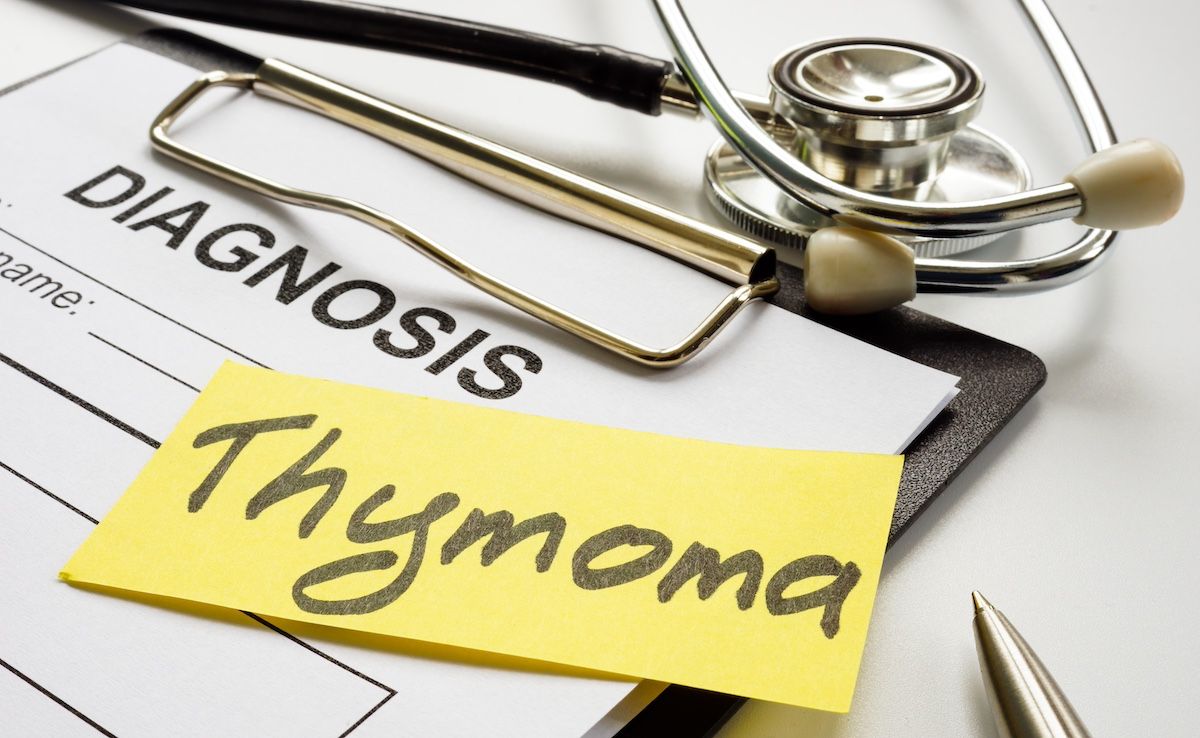- Center on Health Equity & Access
- Clinical
- Health Care Cost
- Health Care Delivery
- Insurance
- Policy
- Technology
- Value-Based Care
Analysis Identifies Biomarkers in Thymoma-Associated MG
The analysis represents an effort to use bioinformatics to find potential new therapeutic targets for myasthenia gravis (MG).
A new genetic analysis of patients with thymoma-associated myasthenia gravis (THYM-MG) has revealed potential biomarkers associated with follicular helper T (Tfh) cells and B cells, as well as genes that might serve as potential therapeutic targets.
The report was published in the journal Heliyon.1
The study authors explained that an estimated 10% to 15% of patients with MG have thymoma, and about 30% of these patients have MG. A 2013 review of the association between the thymus and MG suggested that the thymus played a pivotal role in the pathogenesis of anti–acetylcholine receptor (AChR) autoimmunity in most cases of MG, but found no such connection with MG cases tied to muscle specific kinase autoantibodies.2
“It is generally acknowledged that AChR autosensitization and autoantibody production may occur inside the thymus,” the authors explained. “The precise mechanism that initiates autoantibody production in the thymus remains unclear.”
Among patients with thymoma-associated MG, more work is needed to better personalize care. | Image Credit: Vitalii Vodolazskyi-stock.adobe.com

The investigators said better insights into the causes of thymoma and thymoplasia could help scientists clarify the mechanism of autoantibody production, noting that some three-quarters of patients with anti–AChR-positive MG have thymic abnormalities, either thymomas or germinal center generation (hyperplasia).
“The interaction between numerous B cells and Tfh cells in thymomas causes the formation of ectopic germinal centers, further stimulating the production of autoreactive antibodies and subsequently triggering MG development,” they wrote. “Removing thymoma from MG patients provides direct benefits by reducing the production of B-cell antibodies and the severity of the autoimmune response.”
Patients with thymoma-associated MG (THYM-MG) generally have a poor prognosis and recurring illness, the investigators said. And although newer therapies have been developed to help patients with MG, they said more work is needed to identify new therapeutic targets and to enable more personalized care.
The investigators said recent advances in bioinformatics make it possible to learn more about the tumor microenvironment and the immune infiltration characteristics associated with thymoma in patients with MG and potentially to establish prognostic models.
To that end, they used gene expression microarray data from the Cancer Genome Atlas and the Gene Expression Omnibus database to identify biomarkers associated with Tfh and B cells using weighted gene co-expression network analysis and single-sample gene set enrichment analysis.
They analyzed 102 differentially expressed genes, and found that 16 hub genes were downregulated in tumors and associated with MG development, thus making them potential biomarkers for THYM-MG. The investigators then used various bioinformatics and machine learning tools to find that the SP6, SCUBE3, B3GNT7, and MAGEL2 genes were all potential biomarkers for MG.
“Together, these genes contribute to the progression and course of a variety of autoimmune disorders, neuromuscular system development, and tumors, and in combination with existing research, they have been determined to affect patient outcomes,” they wrote. “Further research is needed to elucidate the related signaling pathways and biological functions to guide clinical decision-making and study the pathogenesis of associated diseases.”
A further druggability analysis identified the genes PTGS2 and ALB as potential therapeutic targets, as well as 4 corresponding therapies: firocoxib (Equioxx; Boehringer Ingelheim), alclofenac, pyridostigmine, and stavudine (Zerit; Bristol Myers Squibb).
The investigators noted several limitations to their findings.
“The greatest limitation is the absence of relevant biological trials and additional local clinical data that validate the value of relevant potential biomarkers and their role in the natural progression of the disease,” they said.
In addition, they said there were limitations and omissions in the datasets used. They also said they did not conduct a direct comparison with other common MG diagnostic markers.
“Future studies will include the collection of pathologic and clinical data, serum samples, laboratory validation, subgroup analysis, and comparison with other traditional biomarkers,” they concluded.
References
1. Li Z, Miao L, Ren G, et al. Weighted gene coexpression network analysis and machine learning for the determination of tfh cell and B cell infiltrating biomarkers in thymoma-associated myasthenia gravis. Heliyon. 2024;10(14):E34364. doi:10.1016/j.heliyon.2024.e34364
2. Marx A, Pfister F, Schalke B, Saruhan-Direskeneli G, Melms A, Ströbel P. The different roles of the thymus in the pathogenesis of the various myasthenia gravis subtypes. Autoimmun Rev. 2013;12(9):875-884. doi:10.1016/j.autrev.2013.03.007
